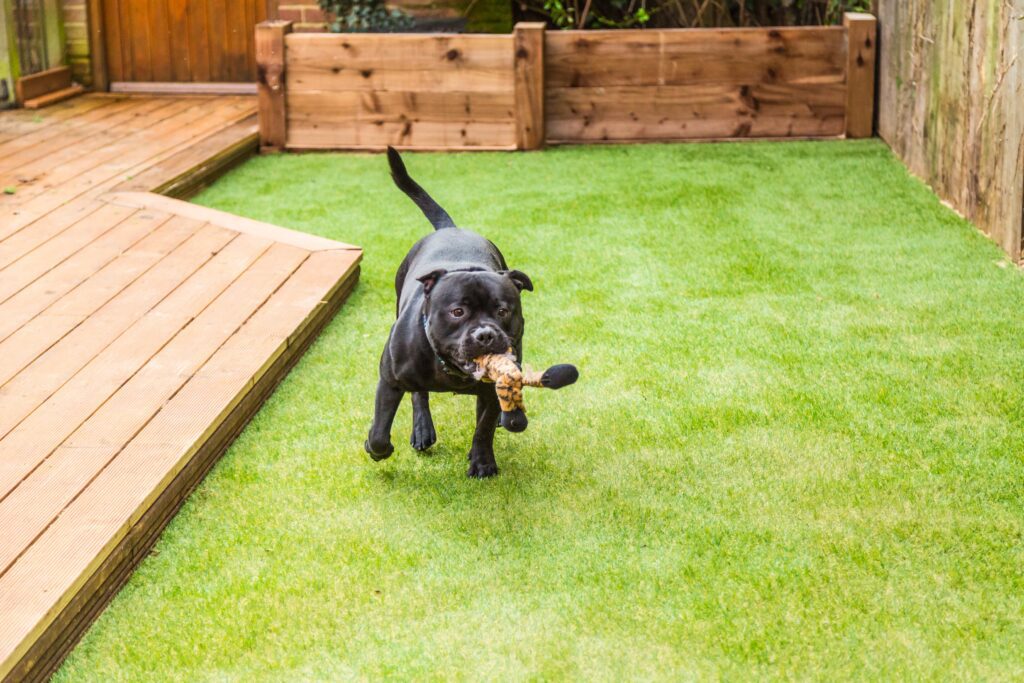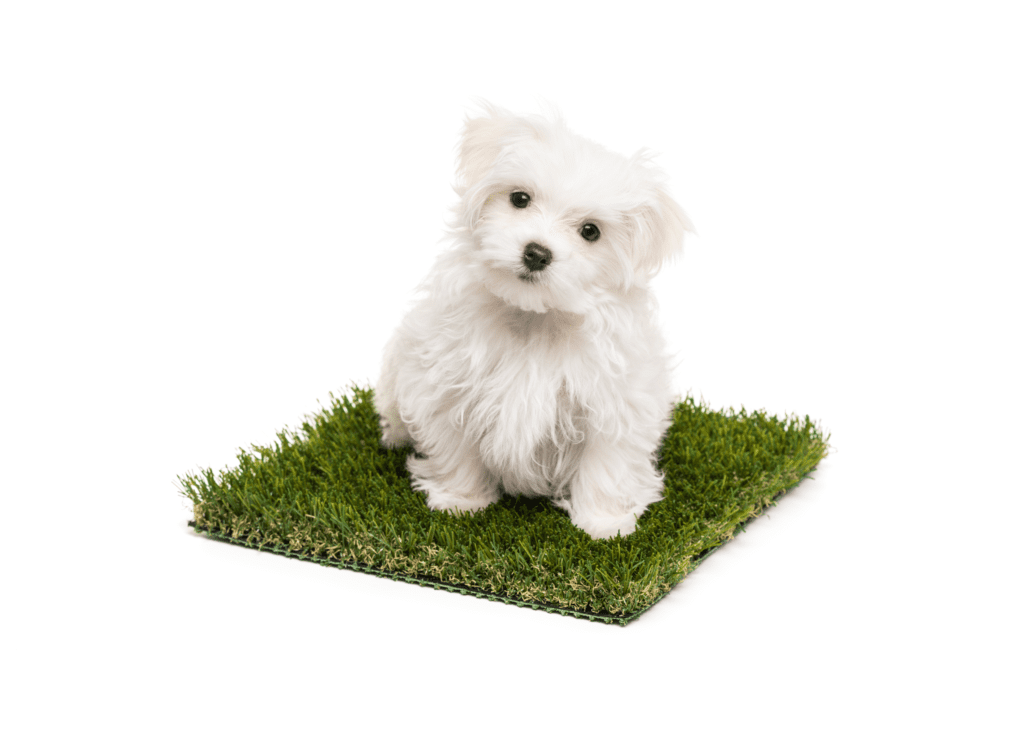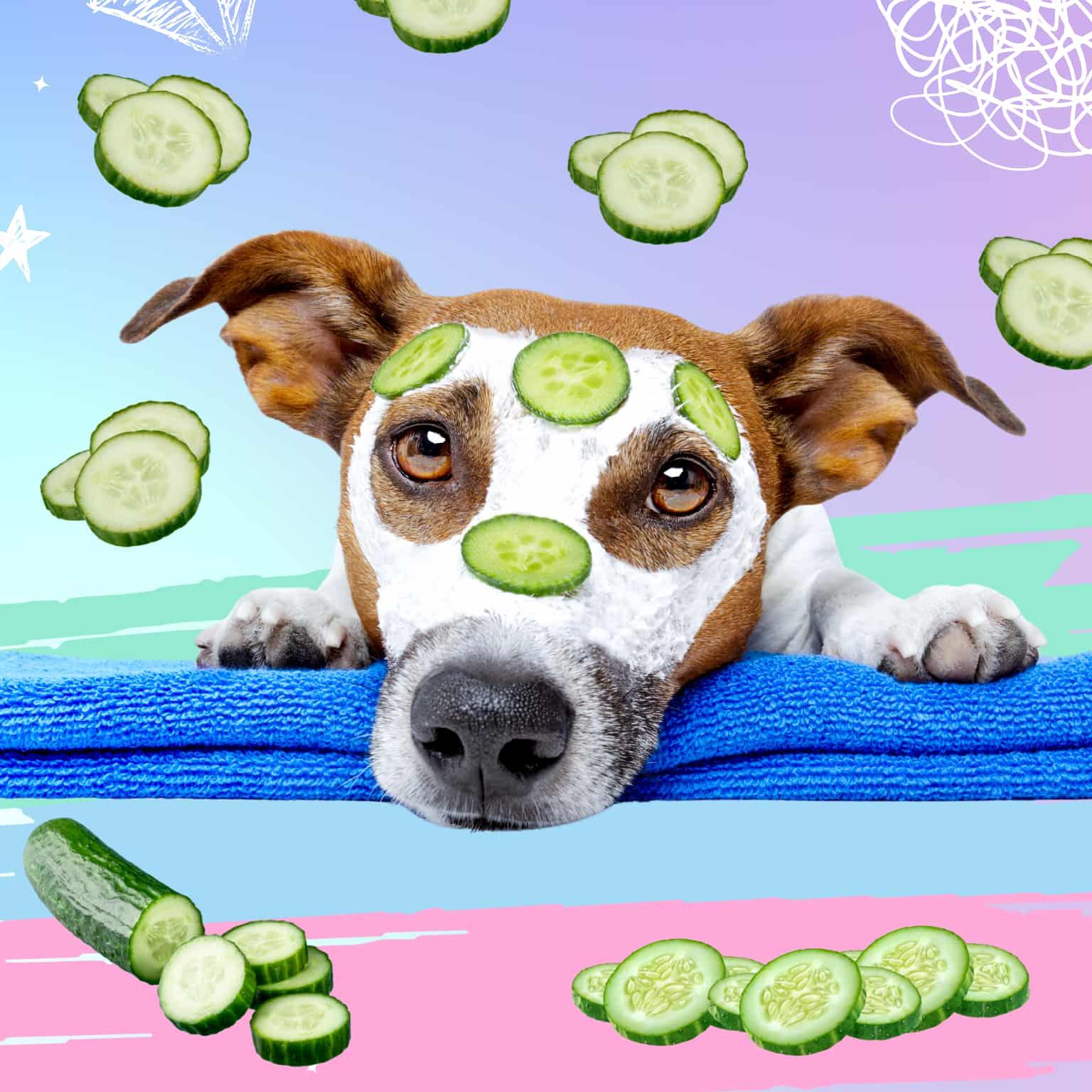Is it really a good idea to have artificial grass when you have dogs? Let’s dive straight in!

Here are some of the pros and cons of artificial grass with dogs:
Pros – the advantages of artificial grass with dogs
-
- No brown spots or dead grass
A dog’s urine will kill natural grass causing patches to turn brown. Artificial grass does not discolour so you keep that lush consistent lawn all year round.
-
- Pest control
Bugs and parasites live on natural lawns, this is their natural habitat and they are much less likely to be found on synthetic grass, this helps with pest control for your furry friend.
-
-
Allergy-friendly
-
Dogs can have allergies to weeds and grass pollen, if this is your dog then synthetic grass will reduce the exposure and provide a reprieve from these symptoms.
-
-
Durability
-
Your dog would have to try very hard and very consistently to be able to damage your artificial grass so no more holes in the garden make this a very attractive solution.
-
-
Shorter grass for shorter legs
-
You won’t have to keep on top of mowing the lawn which means the grass is always suitable for those doggies with shorter legs.
-
-
No pesticides or fertilisers
-
Unlike natural grass, artificial grass does not need chemicals such as pesticides, fertilisers, or weed killers.
-
-
No more muddy paws
-
Fake grass is weather proof and provides the perfect solution to muddy pawprints. This is one of the top reasons people with furry friends consider having artificial grass installed.
-
-
Easy to clean
-
Cleaning your new turf is a very low-maintenance job and will take far less time than mowing, weeding, and strimming.
Cons – the disadvantages of artificial grass with dogs
-
-
Temperature control
-
Synthetic lawns have a higher surface temperature than real grass. In extreme heat (temperatures of 30+ degrees) it can be too hot for paws. This means your dog will need a shaded area during hot weather to avoid burning their paws or possible heatstroke; this is the same principle you would apply to your dog accessing tarmac in the same set of circumstances.
-
-
Limits sniffing opportunities
-
Real grass provides dogs with the chance to enjoy the smell, eat grass when they have an upset stomach, and introduce new bacteria into their stomachs. Installing artificial grass denies them this opportunity but if you walk them regularly they can still get their fix.
-
-
Needs regular cleaning
-
Artificial grass still requires lawn maintenance. Once a week you will need to use a garden hose to rinse the lawn so that poop does not dry onto it and to eliminate the odour from the build-up of pet urine.
-
-
Upfront cost
-
There is an initial cost to install artificial grass and it might cost more for turf suitable for pets as you may need a special underlay or infill material.
-
-
Toxic options
-
Make sure when choosing your artificial grass that you check that it is pet friendly; certain substances like latex are toxic to animals so make sure you do your research. However, it is worth noting that if present, these substances are on the back of the grass so it is unlikely your dog will touch them unless the grass has been dislodged and the dog is able to access the underside.

Top tips
-
-
If you are choosing nylon fibres or polypropylene, choose a pile height of 20-40mm, and for non-nylon fibres choose a height of 20-25mm.
-
To remove the dog hair, use a rubber broom and slightly dampen the grass, this clumps up the hair making it easy to remove, or alternatively you could use a power brush.
-
-
-
Use a stiff broom 2-3 times a year to brush the dog hair off and deep clean your artificial grass. There are also kennel cleaners or my wee smell enzyme-based cleaners like Top Dog Turf.
-
-
-
Make sure you provide a shaded area for your pet during hot weather, and find a supplier that provides pet-safe artificial turf.
-
-
-
Ensure your artificial lawn is free of lead and latex for your dog’s safety.
-
-
-
Do not use a shock pad as this absorbs urine which will make you very unpopular with the neighbours. Some closed cell (non-absorbent) underlays are okay for dogs but there are not many decent ones.
-
Crushed granite or limestone subbase under the lawn is best with more stone and less dust. Maximum drainage is the aim of the game to reduce the risk of the wee smell.
-
Conclusion
There are many advantages to having artificial grass both for you and your dog; it can be a durable, reliable, and safe alternative to natural turf.
Make sure you do your research and consider aspects such as a special underlay that helps reduce the build-up and smell of urine. Consider the cleaning needs and the different grass lengths.
Always provide a shaded area for your pet during hot weather, and find a supplier that provides pet-safe artificial turf.
If you think artificial grass could be for you, head over and check out family-run business Top Dog Turf. They have a ton of impressive reviews from customers who also started out with a ton of questions and concerns. Their products are designed specifically with dog owners and their unique turf-related challenges in mind so you won’t have to deal with any nasty smells or dreadful diseases.




